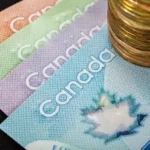By Andrew Walker, BBC World Service Economics Correspondent, January 29, 2015
There have been two important, connected economic developments in Europe.
New official figures from Germany show that prices have fallen, by 0.5%, over the previous 12 months.
Meanwhile the Danish Central Bank has cut one of its main interest rates for the second time in a week.
It is a rate paid to commercial banks for excess funds parked at the central bank. It was already below zero. Now it is even lower – minus 0.5%.
It means banks have to pay to leave money at the central bank, above certain specified limits.
Negative interest rates are another example of the strange financial world that has emerged in the aftermath of the financial crisis.
What is the connection between falling prices – or deflation – in Germany and the Danish central bank? It is about Denmark’s 35-year policy of tying its currency, the krone, to the euro, and before that to the German mark.
That peg has come under increasing strain as the European Central Bank, the ECB, has taken steps to combat deflation.
Falling prices arrived for the eurozone as a whole last month. Germany was an exception to the pattern, but provisional figures for January show that is no longer the case. Deflation in Germany suggests the eurozone will experience faster falls in prices in the months ahead.
There is a debate to be had about whether deflation really is a problem and if so how serious, but the ECB clearly thinks it is.
The steps it has taken to address low inflation, and then deflation, have made it harder for financial market investors to make money in the eurozone.
The ECB cut interest rates and last week launched its quantitative easing programme, which also tends to reduce returns on financial assets.
So investors piled into other currencies, including the krone, pushing it higher, though not so high that it has gone above the top of the central bank’s target band.
The Danish central bank’s rate cuts are intended to offset that pressure.
Does it sound familiar? The Swiss central bank recently gave up its attempt to cap the value of the franc and allowed it to rise. It would be a bigger loss of credibility for Denmark to do the same, because the peg to the euro has been the central element of its economic policy for so long.
In addition, Denmark is a smaller financial system and it is not an established magnet for internationally mobile monney in the way that Switzerland is.
Those are reasons why the Danish currency peg may survive. But the attempt to preserve it has already taken the Danish National Bank into some unusual territory.




